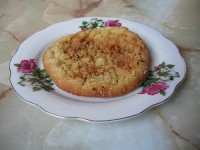Traditional Nepali Musical Instruments
Nepal, being rich in culture and traditions, also has many traditional Nepali musical instruments which produce melodious sounds. Such instruments are played during festivals, jatras, marriages and other ceremonies. Such traditional instruments differ according to the place, caste, religion and culture.
There are three categories of Nepali musical instruments:
- Percussion- Instrument that are it and usually have sungle note but are great for rhythm.
- Wind- Instruments that have a length of air that vibrates, so are blown
- String- They have vibrating strings of different lengths.
Following are some of the traditional Nepali musical instruments.
- Madal
It is a very common instrument which was first used by the Magar community. It is made of a hollow wooden cylinder with its both open sides covered with skin. It is played with both hands.
- Bansuri/Murali
It is very popular. It is made of a thin hollow bamboo pipe. Murali is played by holding its oblique end between two lips but the Bansuri is played by blowing.
- Sarangi
It is originally the traditional musical instrument of the Gandarvas. It is made of the wood of khirro and is played by rubbing a bow ion the wires.
- Panchai Baja ( set of 5 instruments)
- Sahanai
It is made up of metal and is played by putting it between the lips and blowing.
- Tyamko
It is like a damaha/nagara but small in size and is played by beating two drumsticks.
- Nagara/Damaha
It is a large kettledrum made up of copper and covered with skin. It is played by hitting with a gajo.
- Narsinga
It a horn like instrument made up of copper. It is blown at one end and played.
- Jhyali/ Jhyamta/Jhurma
It is made of bronze metal and has to pieces. It is played by hitting one piece with another.
Other famous Nepalese instruments are:






